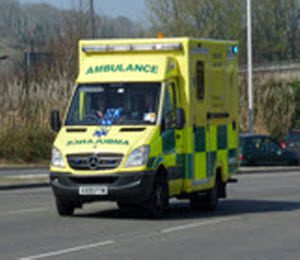Saving lives, supporting communities: The role of volunteers in ambulance services

Helen Gilburt writing at The King’s Fund: At the frontline of NHS emergency care, the ambulance service is probably the last place you’d expect to see volunteers – but you’d be wrong. There are now over 10,000 people who volunteer in ambulance trusts across England.
There are two main areas of care that ambulance service volunteers contribute to – non-emergency patient transport services, where volunteers transport patients from hospital to home, and community first responder schemes. Community first responder schemes, which account for the majority of volunteers, comprise local people who are trained and despatched by the ambulance control centre to attend life-threatening medical emergencies in the area where they live and provide basic life support until the arrival of a professional ambulance crew.

Examples of community first response schemes can be found across the globe, and in the UK some community first responder schemes actually pre-date the ambulance trusts they now support. But being first on scene in a life or death scenario is not for everyone and ambulance services across England have been exploring how they can capitalise on different types of volunteer roles to improve the care and outcomes of the populations they serve. Commissioned by the Office of Civil Society, our new report Volunteering in ambulance services: developing and diversifying opportunities, captures this process and the emerging practice.
One of the key areas that ambulance services have focused on is building the current capacity and quality of the volunteering offer through the Investing in Volunteers accreditation. Satisfaction and retention of volunteers is associated with good volunteer management and through the accreditation process, ambulance trusts are hoping to strengthen their approach to volunteer management in line with good practice.
Ambulance services have also focused on developing the volunteer roles themselves. For example, South Central Ambulance Service has built on the community first responder role – developing advanced training and investing in lifting equipment so community first responders can be deployed to people who have fallen in their homes who’ve not been injured, but need help getting back onto their feet. In contrast, North West Ambulance Service have developed a new role which enhances their existing response to people who make frequent or excessive calls to the ambulance service. In both cases, these roles aim to provide an improved response alongside professional ambulance staff and capitalise on the existing infrastructure of clinical governance, which supports community first responders to ensure that the care provided has appropriate oversight.
A final area of development is ambulance services connecting with communities through volunteering. The 999 Academy, developed by South West Ambulance Service, engages young people aged 16–19 in a cadet-like scheme, providing vital life skills and an introduction to the blue light services supported by staff from the ambulance, police and fire services. Other ambulance services have developed partnerships with local voluntary and community sector organisations to develop volunteer roles able to respond to and support the wider needs of people in the community. Ambulance services serve large populations across wide geographies and the ability to build relationships with communities and the organisations within those areas provides opportunities to influence current and future patterns of demand for health services and make a positive contribution to population health.
The ambition of ambulance services should be applauded, but it doesn’t come without real challenges. The current infrastructure to support volunteers has evolved in line with the clinical requirements of these roles but can constrain support required for volunteers engaged in other activities. In addition, volunteer managers often have oversight for large numbers of volunteers across a region and an overarching focus on operational delivery means that capacity to develop the volunteering offer and support more volunteers is often limited. What they have achieved therefore is a sure sign of their commitment. And there are early indications of the potential benefits from this work, from enhancing current processes to developing creative solutions to improve the response of the ambulance service – ensuring the public get the right resource, the right skills and at the right time.



